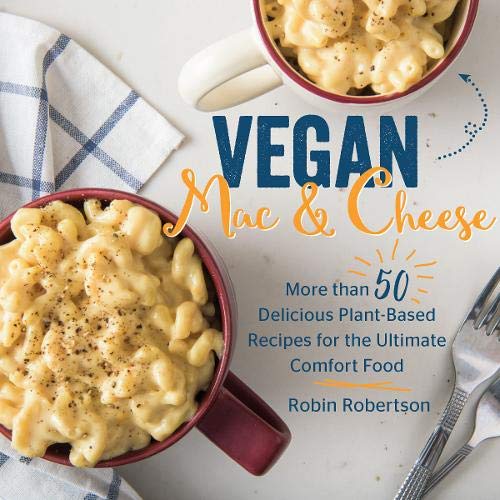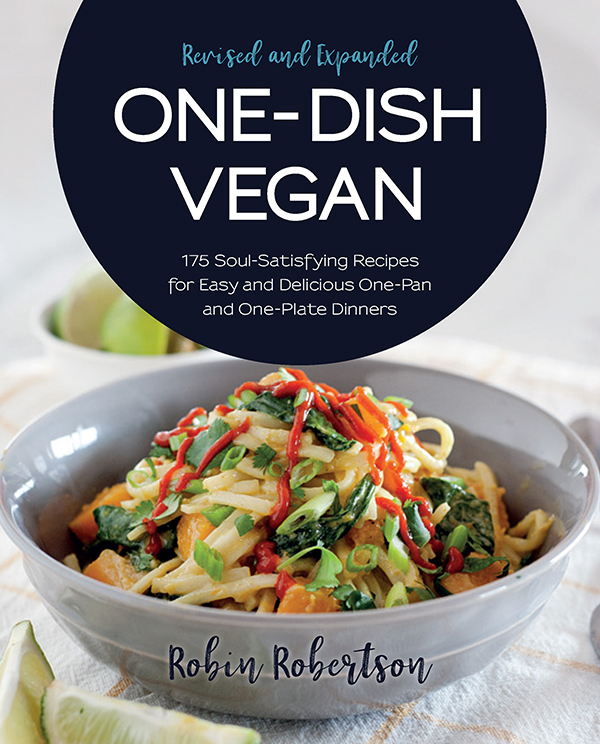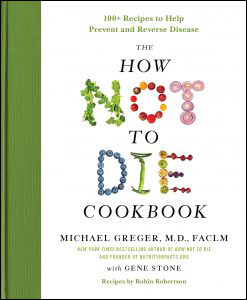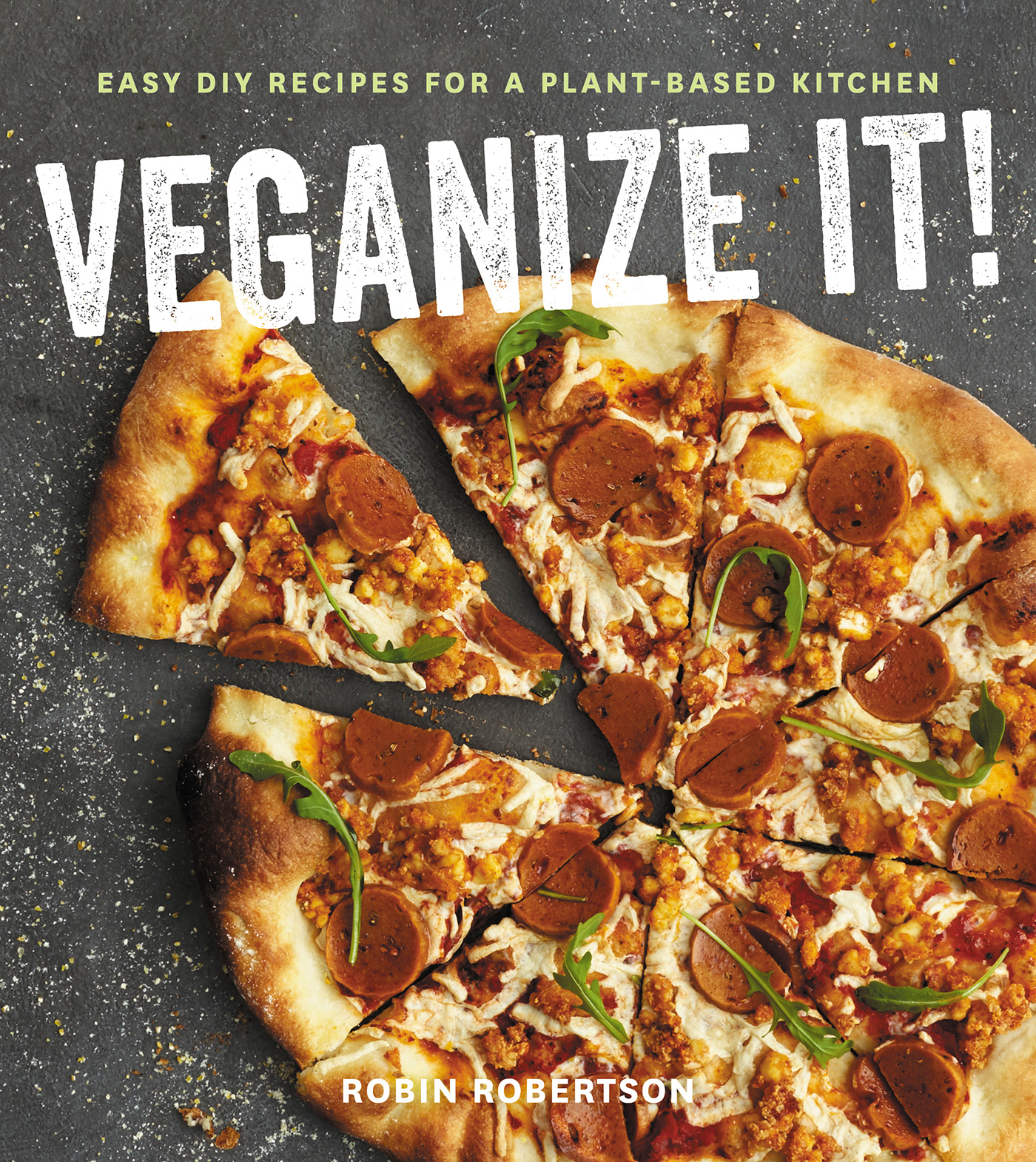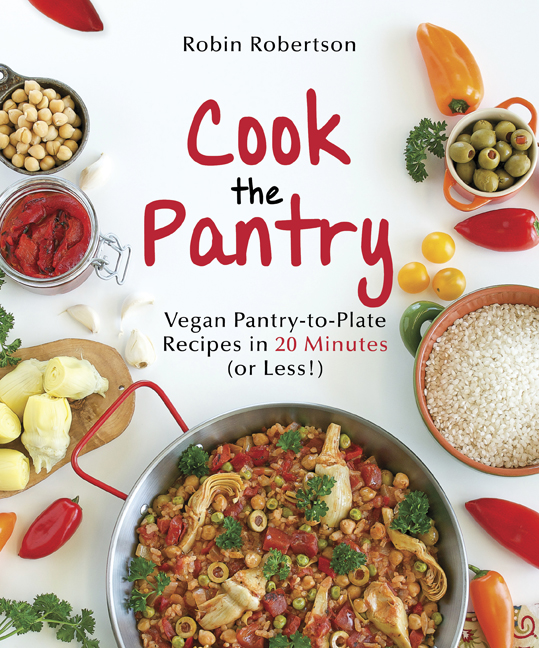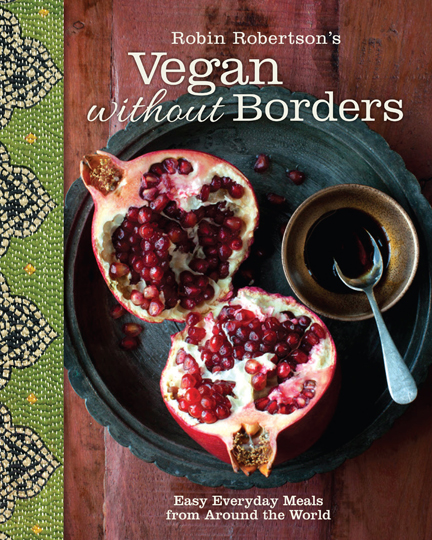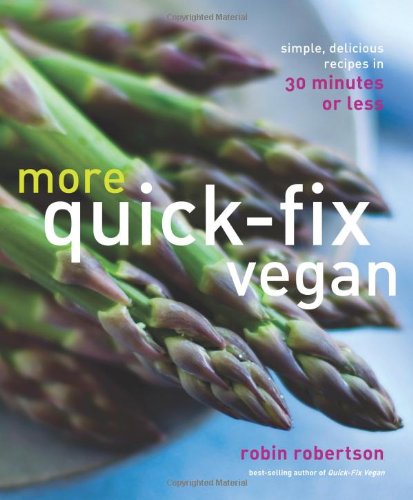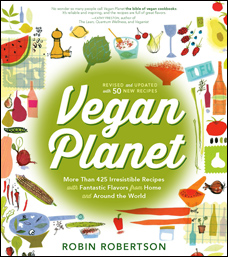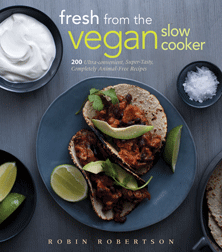by Robin Robertson
on December 8, 2020

It’s time to announce the second winner of my Holiday Cookbook Giveaway. As a reminder, three winners are being chosen (one each week) to win copies of four of my recent cookbooks: The Plant-Based Slow Cooker, The Plant Protein Revolution Cookbook, Vegan Mac & Cheese, and One-Dish Vegan.
The second winner has been chosen using the Random Number Generator on Random.org and the winner is: Sandra Lee Childs. To claim your cookbooks, Sandra, please send me an email or DM me on Messenger and let me know where to send your cookbooks! If I don’t hear from you by next week, another winner will be chosen (along with a winner for the third and final giveaway).
Everyone else, thanks for entering and if you didn’t win this time, you’ll have another chance to win next Tuesday. And keep those new entries coming in (on the original Holiday Cookbook Giveaway post from November 27).
{ }
by Robin Robertson
on December 1, 2020
 Thank you to all who entered my Holiday Cookbook Giveaway. Reading all of your comments has been a source of joy and inspiration.
Thank you to all who entered my Holiday Cookbook Giveaway. Reading all of your comments has been a source of joy and inspiration.
The first winner has been chosen using the Random Number Generator on Random.org and it tells me that our first winner is: .
To claim your cookbooks, Lydia Claire, please send me an email or DM me on Messenger and let me know where to send your cookbooks! If I don’t hear from you by next week, another winner will be chosen (along with a winner for the second giveaway).
If you didn’t win this time, no worries — you will have two more chances to win on the next two Tuesdays. Keep those entries coming in (on the original Holiday Cookbook Giveaway post from November 27).
{ }
by Robin Robertson
on November 27, 2020
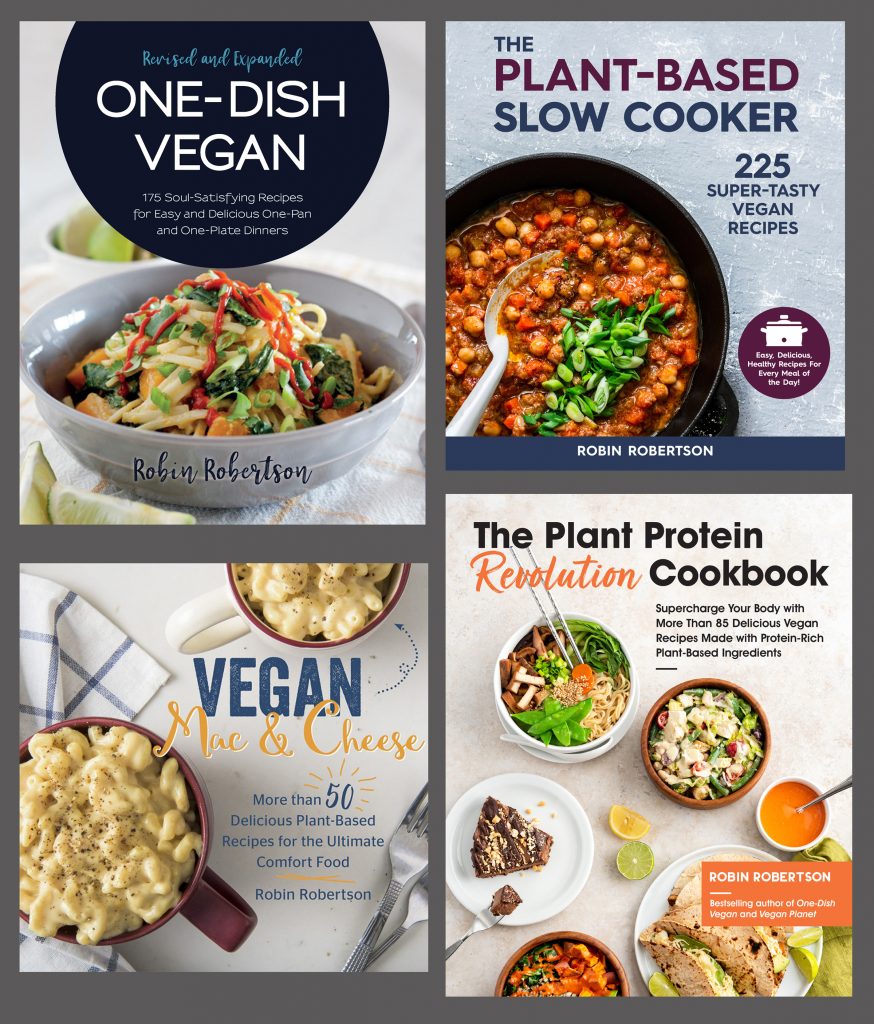
It’s time for my first annual Holiday Cookbook Giveaway!
I will be giving away a set of four of my recent titles to three lucky winners during the next three weeks.
Each book bundle will include a copy of:
Vegan Mac & Cheese
The Plant-Based Slow Cooker
One-Dish Vegan
The Plant-Protein Revolution Cookbook
The first winner will be announced on Tuesday, December 1st; the second winner will be announced on Tuesday, December 8th; and the third winner will be chosen on Tuesday, December 15th. The winners will be chosen at random.
Whether you add the books to your personal cookbook collection, or give them away as gifts, this giveaway is my way of saying thank you and Happy Holidays from me to you.
To enter this giveaway, simply leave a comment at the end of this post. For example: What are you grateful for? What makes you smile? Why do you want to win these books? What’s your favorite vegetable? TELL ME SOMETHING GOOD!
Enter now! Leave your comment at the end of this post and check back on the next three Tuesdays to see if you’ve won a cookbook bundle!
{ }
by Robin Robertson
on October 27, 2020
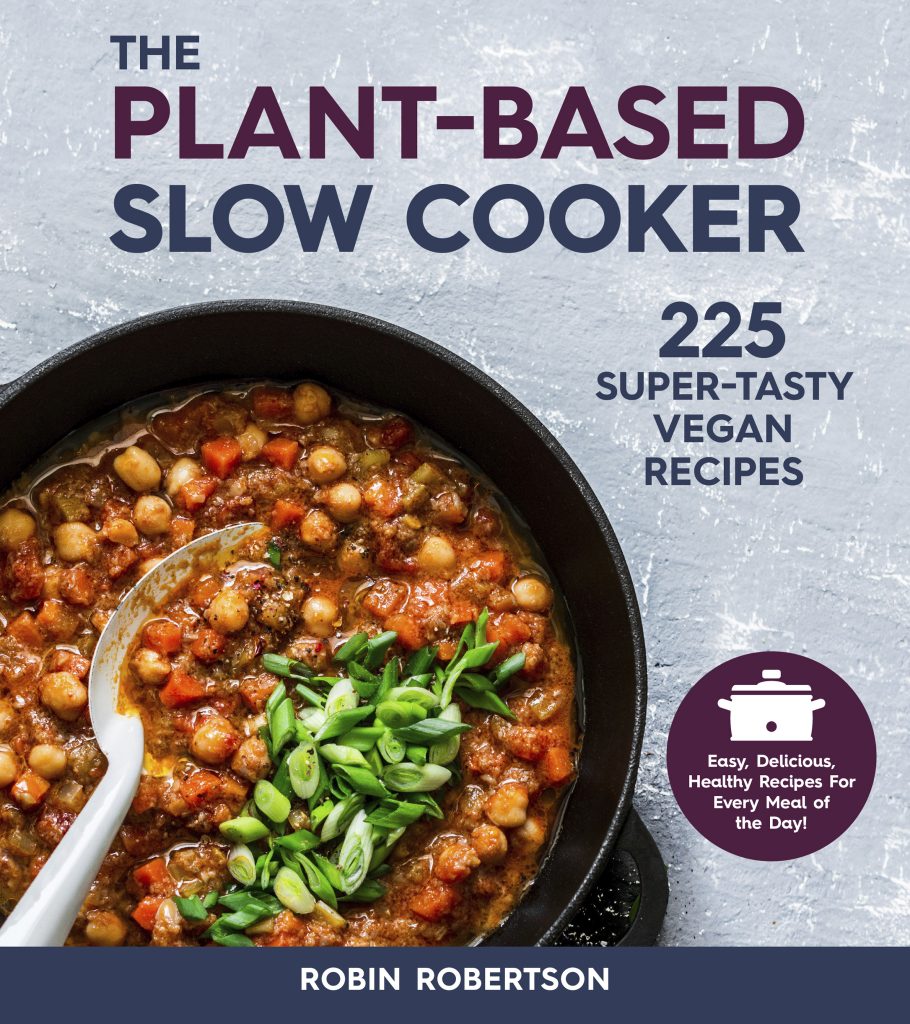
The Plant-Based Slow Cooker is my latest book and it comes out just in time for slow cooker season. There’s something cozy about the wonderful fragrance of food simmering in a slow cooker on a cold winter day. (Of course, if you’re like me, you use your slow cookers all year long.)
If you’re a fan of my earlier book, Fresh from the Vegan Slow Cooker, then you’ll love this new edition, revised and updated with new information and tips and featuring 225 recipes — including many all-new ones such as:
- Thai Coconut Soup
- Oyster Mushroom Bouillabaisse
- Seitan Spezzatino
- Spice-Rubbed Whole Cauliflower
- Jackfruit and Black Bean Chili
- Portobello Pot Roast
- Ful Medames
- Indian Eggplant Curry
- Korean Bugogi-Inspired Jackfruit
- Artichoke-Spinach Lasagna
- Chocolate Oatmeal with Raspberries and Rose Petals
- Carrot Cake Oatmeal
Due out on November 10, you can pre-order The Plant-Based Slow Cooker on Amazon or wherever you buy your books.
{ }
by Robin Robertson
on August 28, 2020
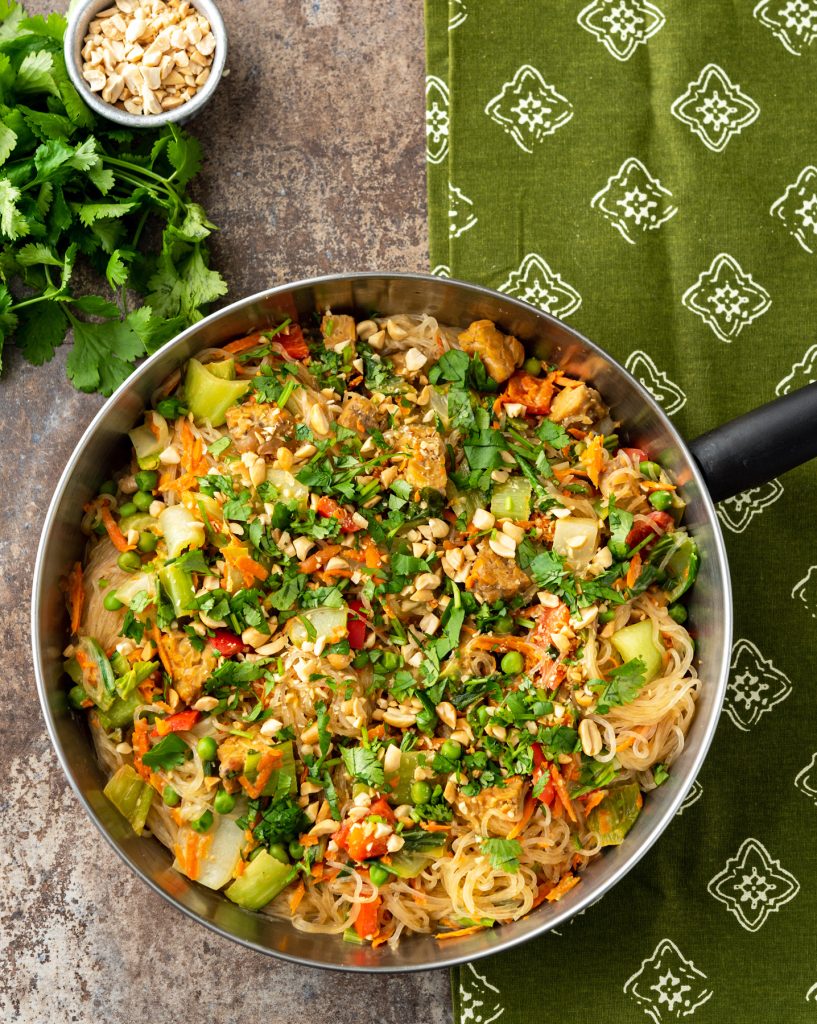
The answer is: Indonesian Noodles with Tempeh.
Here’s the question: What is easy to make, tastes great, features a delicious sauce made with peanut butter and coconut milk, and contains more than 30 grams of plant protein per serving?
This is just one of the protein-packed recipes you’ll find in my new book, The Plant Protein Revolution Cookbook.
Enjoy!
Indonesian Noodles with Tempeh
Tofu or seitan can be used instead of tempeh, if you prefer. You can also make this dish using cooked rice instead of noodles.
- 8 ounces (225 g) rice vermicelli (or use cooked spaghetti)
- 2 tablespoons (30 ml) water, or 1 tablespoon (15 ml) avocado oil
- 8 ounces (225 g) braised tempeh, cut into 1/2-inch [1 cm] dice
- 1/3 cup (70 ml) tamari
- 1/2 cup (130 g) creamy natural peanut butter
- 2/3 cup (140 ml) low-fat unsweetened coconut milk
- 2 tablespoons (30 ml) fresh lemon juice
- 1 to 2 teaspoons sambal oelek or other Asian chili paste (depending on how spicy you want it)
- 1 teaspoon natural sugar
- 11/4 cups (295 ml) water
- 1 red bell pepper, seeded and chopped
- 6 cups (420 g) chopped bok choy
- 1 large carrot, shredded
- 1/2 cup (50 g) chopped scallions, white and green parts
- 3 garlic cloves
- 1 tablespoon (8 g) grated fresh ginger
- 1 cup (134 g) frozen peas, thawed
- 1/4 cup (35 g) chopped unsalted dry-roasted peanuts
- 2 tablespoons (8 g) minced fresh cilantro
- Soak the rice vermicelli in hot water until softened, about 5 minutes. Drain well, rinse, and set aside.
- Heat the water in a large skillet or wok over medium-high heat. Add the tempeh and 1 tablespoon (15 ml) of the tamari and cook until the tempeh is browned on all sides. Remove the tempeh from the skillet and set aside.
- In a food processor, combine the peanut butter, coconut milk, lemon juice, sambal oelek, sugar, and the remaining 4 tablespoons plus 1 teaspoon (64 ml) tamari. Add 1 cup (235 ml) of the water and process until smooth, then set aside.
- Heat the remaining 1/4 cup (60 ml) of water in a large skillet or wok over medium-high heat. Add the bell pepper, bok choy, carrot, scallions, garlic, and ginger and cook, stirring occasionally until softened, about 10 minutes.
- Reduce the heat to low and stir in the peas and the reserved tempeh. Add the reserved noodles, stir in the sauce, and simmer until the noodles are hot and well coated with the sauce. Serve garnished with peanuts and cilantro.
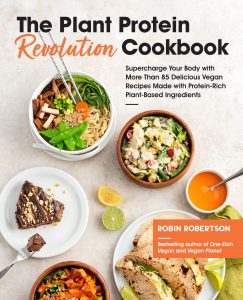
{ }
by Robin Robertson
on August 5, 2020
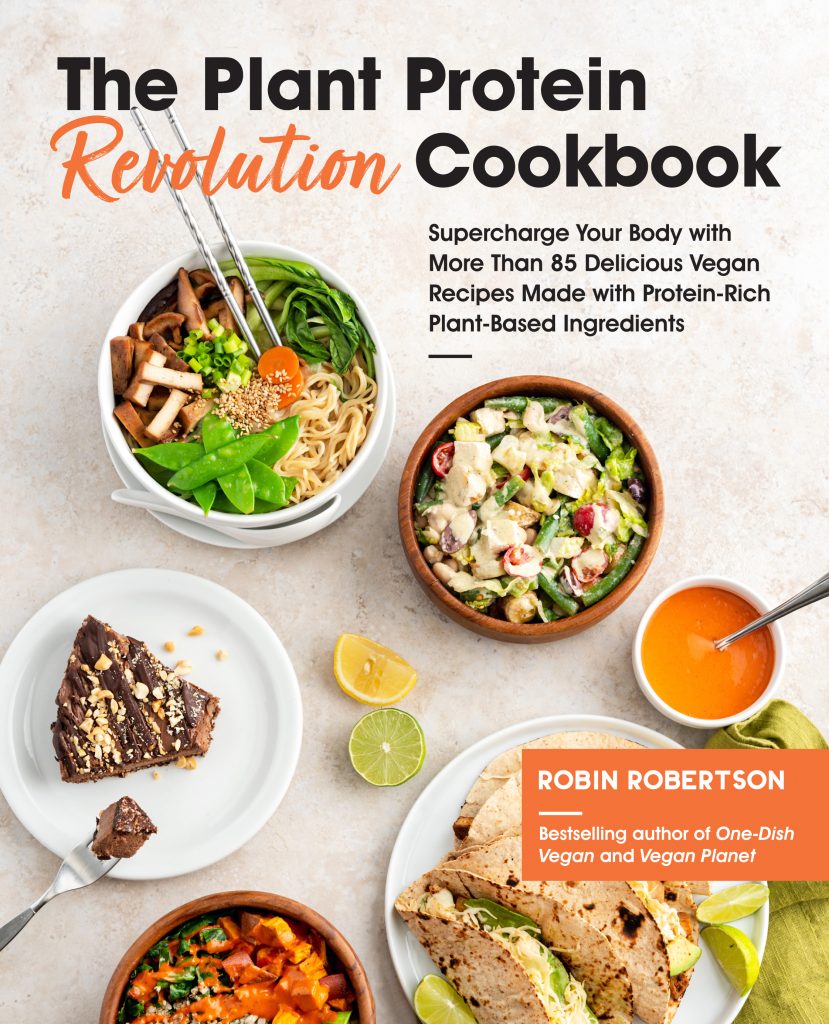
With the publication date of The Plant Protein Revolution Cookbook less than one week away, I want to share more of the amazing support for this book, this time by the No-Meat Athlete himself, Matt Frazier. Matt and other plant-based athletes prove that you don’t need meat and dairy to build a strong, competitive body with energy to spare.
For my new book The Protein Revolution Cookbook, Matt has this to say:
“Think protein is a problem on a plant-based diet? Think again! The Plant Protein Revolution Cookbook makes it easy (and delicious) to get all the protein you need to fuel even an active lifestyle — without relying on fake, processed meat substitutes, and instead choosing healthy whole foods. The first vegan cookbook I ever bought was by Robin Robertson, and I’ve been a fan ever since. This new book shows why she’s one of the best at creating healthy, easy, plant-based recipes that the whole family will love.”
– Matt Frazier, vegan ultramarathoner and author of No Meat Athlete and The No Meat Athlete Cookbook
I hope you’ll spread the word about this book to all the runners and other athletes you know. You can pre-order a copy of The Plant-Protein Revolution Cookbook today and it will ship right out to you on August 11.
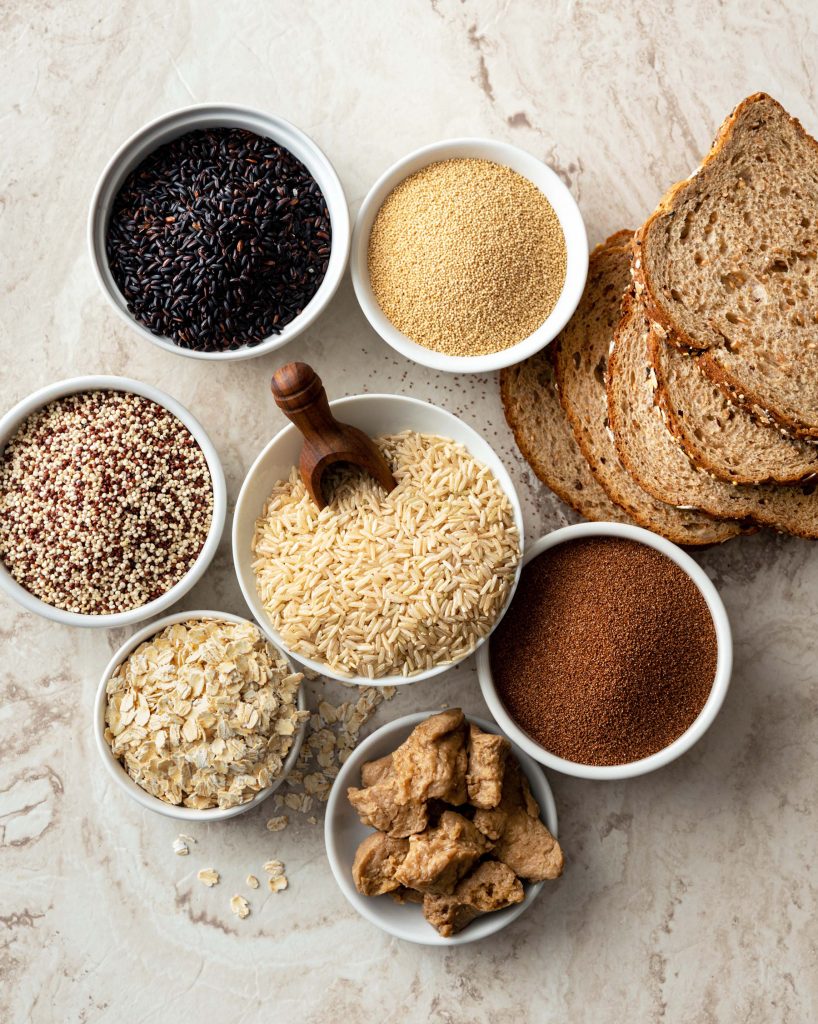
{ }
















